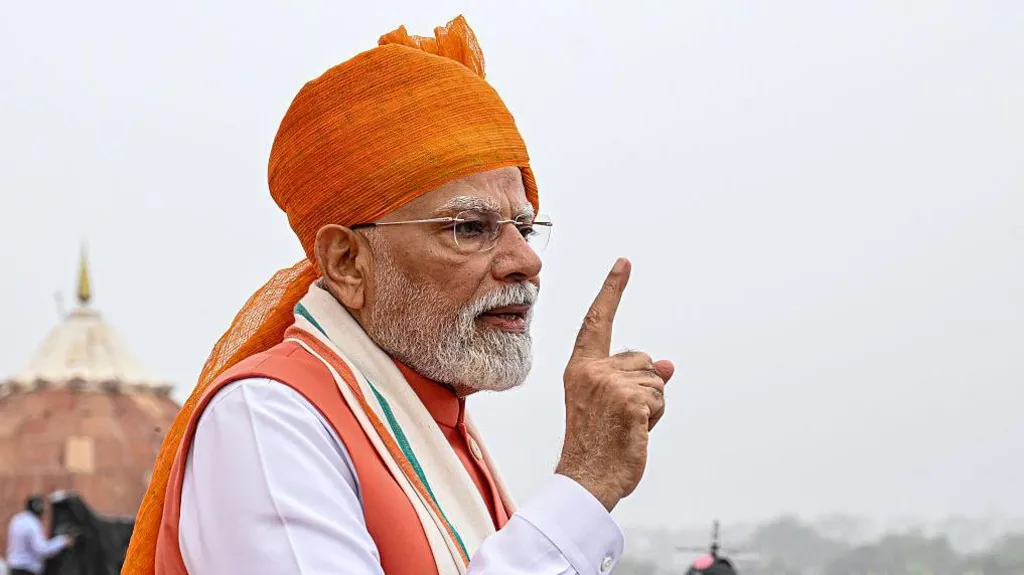Trump’s 50% tariffs on India take effect, Modi moves to cushion the blow
Modi’s response -- Tax cuts and self-reliance; push for tax reforms in the face of broader economic impact as trade tensions with the U.S. bites deep. “We must become self-reliant — not out of desperation, but out of pride. The world is turning inward with economic selfishness. We cannot sit and cry about it. We must rise above it,” – Narendra Modi

Donald Trump’s steep 50% tariffs on Indian goods officially came into effect on August 27, weeks after the U.S. president signed an executive order adding an extra 25% penalty over New Delhi’s purchases of Russian oil and weapons.
The move makes India — long considered one of Washington’s strongest Indo-Pacific partners — one of the most heavily taxed trade partners in the world. Economists warn the new tariffs could weigh heavily on Indian exports and slow growth in the world’s fifth-largest economy, given that the U.S. was, until recently, its top trading partner.
The Indian government has scrambled to contain the fallout. Earlier this month, Prime Minister Narendra Modi pledged tax cuts to soften the impact on households and businesses. Speaking from Delhi’s Red Fort during Independence Day celebrations, Modi announced that a “massive tax bonanza” was on the way for ordinary citizens and millions of small businesses.
Wearing a saffron turban, he called on small shopkeepers and businesses to proudly display “Swadeshi” (“Made in India”) signs at their establishments.
“We must become self-reliant — not out of desperation, but out of pride,” he said. “The world is turning inward with economic selfishness. We cannot sit and cry about it. We must rise above it.”
His message, repeated in subsequent speeches, was a direct counter to Trump’s tariff escalation that threatens livelihoods across India’s export-driven industries, which supply everything from textiles and jewelry to seafood to U.S. consumers.
Analysts say Modi’s best chance at cushioning the blow is through long-delayed tax reforms. India’s manufacturing share of GDP has stagnated at around 15% despite years of subsidies and incentives. But by putting money directly into people’s hands, consumer spending—the engine of India’s economy — could revive.
After rolling out a $12 billion income tax cut earlier this year, Modi is now targeting India’s complex goods and services tax (GST). Introduced in 2017 to replace a patchwork of levies, the GST system has been criticized for too many exemptions and thresholds.
The finance ministry has now proposed a simplified two-tier GST system, with analysts estimating the reform could deliver a $20 billion boost. “Combined with the income tax cuts already in place, the GST overhaul should give consumption a meaningful push,” said U.S. brokerage Jefferies.
Private consumption makes up nearly 60% of India’s GDP. While rural demand has held up thanks to strong harvests, urban spending remains sluggish amid job cuts in key sectors like IT.
Investment bank Morgan Stanley noted that the tax cuts act as a fiscal stimulus: “They will help lift GDP growth and ease inflation at a time of global geopolitical tensions and tariff shocks.”
Sectors such as automobiles, garments, housing materials, and consumer goods are expected to benefit most.
Analysts believe the revenue hit from lower GST rates will be offset by surplus tax collections and larger-than-expected dividends from the central bank.
Swiss bank UBS said GST cuts will have a bigger multiplier effect than earlier corporate tax cuts because they directly reduce prices at the point of purchase, encouraging more spending.
India’s central bank, which has already cut interest rates by 1% this year, may also be pushed to reduce rates further — stimulating lending and investment. At the same time, upcoming salary increases for nearly 5 million government workers and 6.8 million pensioners should boost consumption.
Markets have responded positively. Earlier this month, despite trade tensions, India secured its first sovereign rating upgrade from S&P Global in 18 years — potentially lowering borrowing costs and attracting more foreign investment.
Yet, serious challenges remain. Growth has slowed from 8% in previous years, and external pressures show no signs of easing. Trade negotiations between India and the U.S., scheduled to begin this week, were abruptly canceled as tensions over New Delhi’s Russian oil purchases escalated.
At 50%, India’s new tariff rate is effectively a sanction, experts warn — placing unprecedented strain on trade ties between the world’s largest and fastest-growing major economies.
Follow The Times Kuwait on X, Instagram and Facebook for the latest news updates












